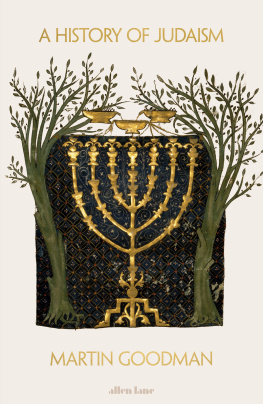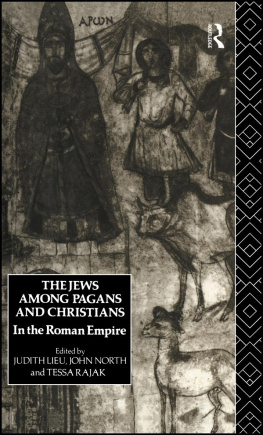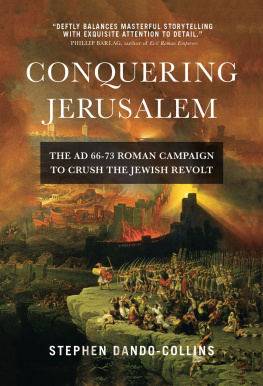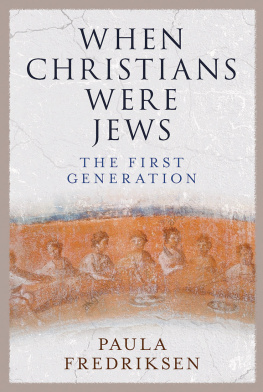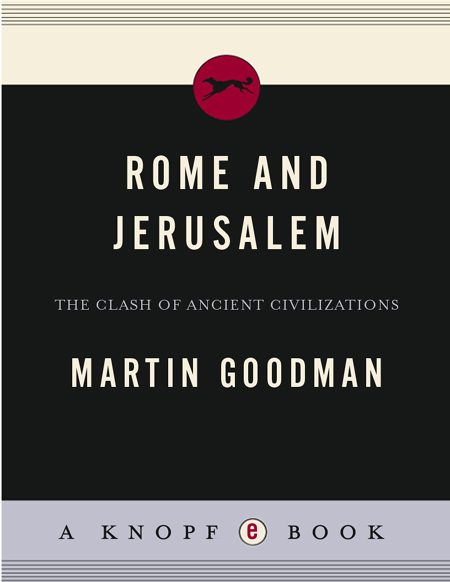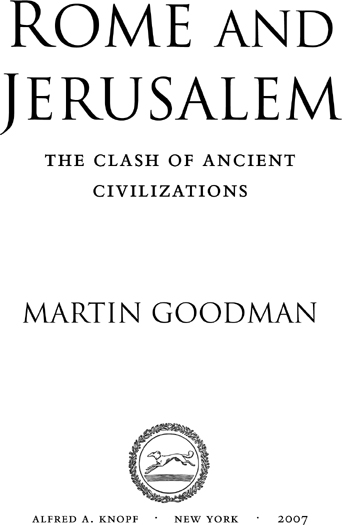illustrations, figures and maps
PHOTOGRAPHS
Photographic acknowledgements are given in parentheses.
1. Apartment block, Via di Diana, Ostia (Alinari Archives, Florence)
2. The Colosseum, Rome (Jon Arnold/Alamy)
3. Courtyard of the House of the Silver Wedding in Pompeii (Alinari Archives, Florence)
4. Interior of the Burnt House, Jerusalem (Israel Images, Jerusalem)
5. Aerial view of the mausoleum of Augustus in Rome (Charles E. Rotkin/Corbis)
6. Circular structure on the summit of the Herodium near Bethlehem (Israel Images, Jerusalem)
7. Flight of steps on the Temple Mount, Jerusalem
8. Remains of the Western Wall on the Temple Mount, Jerusalem (Mervyn Rees/Alamy)
912. Inscribed reliefs depicting the Jews, Dacians, Crete and Cyprus from the Sebasteion at Aphrodisias (courtesy New York University Excavations at Aphrodisias)
13. Personification of Egypt on a coin of Hadrian (Ashmolean Museum, Oxford)
14. Britannia on a coin of Hadrian (copyright Trustees of the British Museum)
15. Mauretania on a coin of Hadrian (Ashmolean Museum, Oxford)
16. Judaea on a coin of Hadrian (copyright Trustees of the British Museum)
17. Funerary portrait of young woman, probably from er-Rubayat, Egypt, in the British Museum, London (Top Foto/Alinari Archives, Florence)
18. The so-called Tomb of Absalom in the Kidron valley, Jerusalem (Israel Images, Jerusalem)
19. Detail from Trajan's column, showing the slaughter of Dacians (Alinari Archives, Florence)
20. Roman statue of Antinous as Bacchus, in the Museo Nazionale, Naples (copyright 1990 Photo Scala, Florence, courtesy of the Ministero Beni e Att. Culturali)
21. Fresco showing Bacchus and Vesuvius from Pompeii (Alinari Archives, Florence)
22, 23. Silver shekel minted by the independent Jewish state in 68 CE(Ashmolean Museum, Oxford)
24. Frieze from the Arch of Titus, Rome (Alinari Archives, Florence)
25, 26. Judaea Capta coin (Ashmolean Museum, Oxford)
27. Aerial view of Masada (Israel Images, Jerusalem)
28. Faade of the Temple of Jerusalem depicted on a tetradrachm minted by Jewish rebels (Ashmolean Museum, Oxford)
29. The she-wolf suckling Romulus and Remus, depicted on a coin of Aelia Capitolina (photograph copyright The Israel Museum, Jerusalem)
30. Oil lamp from Aelia Capitolina (photograph copyright The Israel Museum, Jerusalem)
31. Mural from the Dura Europus synagogue depicting the destruction of the Temple of Dagon (Department of Ancient Art, Yale University Art Gallery, New Haven)
32. Jewish sarcophagus from Rome in the Museo Nazionale Romano delle Terme, Rome (akg-images/Erich Lessing)
33. Sol Invictus depicted on a coin of Victorinus (copyright Trustees of the British Museum)
34. Sol Invictus depicted on a coin of Constantine (Ashmolean Museum, Oxford)
35. Mosaic depicting Helios from Hammat Tiberias (Israel Images, Jerusalem)
36. Bronze statue of Hadrian from Tel Shalem (photograph copyright The Israel Museum, Jerusalem)
FIGURES
The Julio-Claudian dynasty xvi
The Herodian dynasty xviii
MAPS
Maps Jerusalem in 66CE II
Judaea in the first century CE 13
Rome in the Julio-Claudian period 40
Central Italy in the first century CE 42
The Roman world in 14 CE 68
Aelia Capitolina 474
Rome in the time of Constantine 525
Jerusalem in the time of Constantine 541
Acknowledgments
Many friends, colleagues and students have contributed to this book over the years I have been teaching and writing on Jewish and Roman history. I am particularly indebted to Judith Lieu, Fergus Millar and Sacha Stern, who all read the manuscript at an early stage in its long evolution and gave me invaluable help. The remaining errors are entirely my responsibility.
The idea for the book came from Stuart Proffitt at Penguin, and I owe a great deal to his meticulous reading of the text and his wise advice. In the selection of images for illustration I have been much helped by Cecilia Mackay, Volker Heuchert and Janet Delaine. I am grateful to Amos Kloner for his expertise when I was drawing up the maps of Jerusalem. Neelum Ali has typed and altered the long typescript in its many revisions with remarkably good humour and forbearance. The text was expertly copy-edited by Elizabeth Stratford. The maps were drawn by John Gilkes. The index was compiled by Margaret Binns.
A book that covers so wide a span of history has necessarily culled insights from much previous scholarship, and in the endnotes, which are intended only as a general guide to the reader, I have not been able to give a full acknowledgement of all the many works to which I am indebted. I have made much use of previous English versions of ancient sources, in particular Geza Vermes, The Complete Dead Sea Scrolls in English (London, 1997), Averil Cameron and Stuart G. Hall, Eusebius, Life of Constantine (Oxford, 1999) and a number of the translations published in the Loeb Classical Library, especially the translation by H. St.-J. Thackeray of Jose-phus, The Jewish War.
I am grateful to the Oxford Centre for Hebrew and Jewish Studies and to the Oriental Studies Faculty of the University of Oxford for financial support in preparing the book for publication, and to the British Academy for awarding me a Research Readership, without which I do not think it would have been possible to complete the task.
It is a great sadness that my father did not live to see the book, but he did enjoy the knowledge that it was on its way (and he liked the cover). I dedicate this book to my wife, Sarah, whose consistent enthusiasm for penguins has encouraged me to keep going.
Martin Goodman
Oxford and Birmingham
October 2006
Dynasty Family Trees
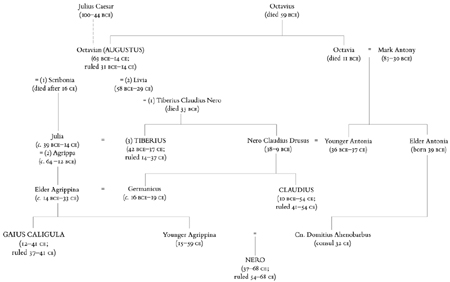
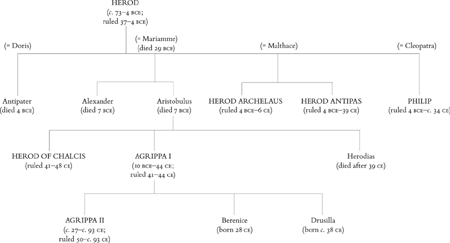
The destruction of Jerusalem is the only subject now remaining for an epic poem; a subject which, like Milton's Fall of Man, should interest all Christendom, as the Homeric War of Troy interested all Greece. There would be difficulties, as there are in all subjects; and they must be mitigated and thrown into the shade, as Milton has done with the numerous difficulties in the Paradise Lost. But there would be a greater assemblage of grandeur and splendour than can now be found in any other theme Here there would be the completion of the propheciesthe termination of the first revealed national religion under the violent assault of Paganism, itself the immediate forerunner and condition of the spread of a revealed mundane religion; and then you would have the character of the Roman and the Jew, and the awfulness, the completeness, the justice.


